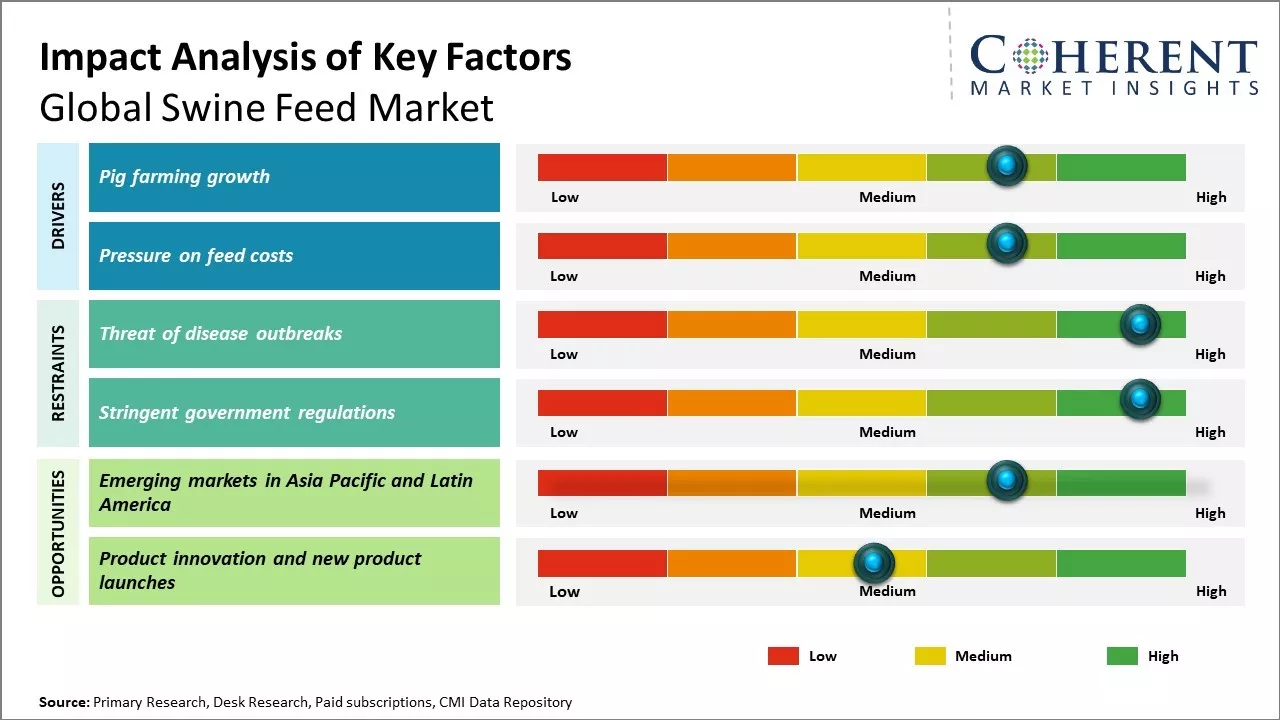The swine feed market is estimated to be valued at USD 114.78 Bn in 2025 and is expected to reach USD 156.31 Bn by 2032, exhibiting a compound annual growth rate (CAGR) of 4.5% from 2025 to 2032.

To learn more about this report, Request sample copy
The global swine feed market is expected to witness positive growth over the forecast period. Increasing meat consumption worldwide primarily driven by rising population is expected to drive the demand for pork which, in turn, is expected to boost the growth of the swine feed market. Growth in the demand for animal protein coupled with rising disposable income especially in developing regions is expected to support the market growth. Additionally, various initiatives undertaken by government and market players to increase pork production are also expected to have a positive impact on the swine feed market. However, stringent regulations pertaining to the use of antibiotics and growth hormones in swine feed may hamper the market growth to some extent over the forecast period.
Drivers of the Market:
Pig farming growth
The growth of pig farming across major pork producing countries has been one of the key drivers for the swine feed market in recent years. There has been a significant rise in pork consumption globally due to increasing population, rising incomes, and changing food preferences. Countries like China, the U.S., Brazil, and Germany have seen huge increases in pig livestock numbers over the last decade alone. Pork is now becoming a widely consumed meat in many developing Asian and Latin American countries.
This rise in pig farming has encouraged farmers to expand their operations and increase herd sizes to meet the growing demand. Larger farms now house thousands of pigs and require huge volumes of specialized feed products. Feeding high-quality nutritional feed to commercial pig stocks is crucial for their optimal growth performance and timely production cycles. Farmers leave no stone unturned to source the best quality swine feed mixes and nutritional supplements. Leading feed producers have capitalized on this trend by introducing innovative formulations tailored for various growth stages of pigs. They also provide expert guidance to farmers for efficient feeding practices.
Joining thousands of companies around the world committed to making the Excellent Business Solutions.
View All Our Clients